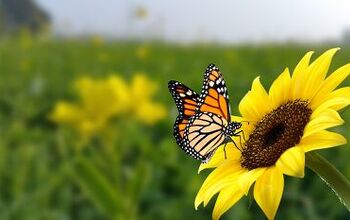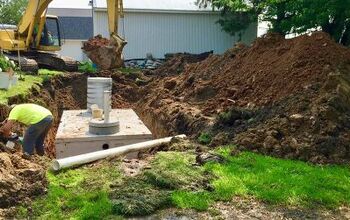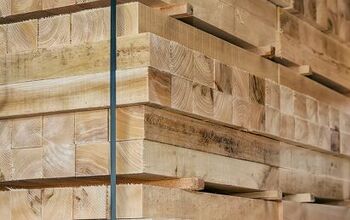Are Skinks Good For Your Garden?

A bug or animal’s appearance doesn’t necessarily tell you whether or not it’s good for your garden. After all, some scary-looking snakes and lizards are harmless, whereas some cute bugs are poisonous. So, are skinks good for your garden?
Skinks are good for your garden because they help maintain a healthy ecosystem. They hunt bugs that would run wild without any natural predators, so homeowners and gardeners benefit from skinks. You can attract skinks to your garden if you provide plenty of groundcover and avoid using harmful chemicals. Skinks also love basking spots and yard debris, like fallen leaves.
Provide plenty of water and use mulch to create a nurturing environment for skinks. Follow along as we explore everything you must know about the skinks in your garden.
Is It Good To Have Skinks Around Your House?
It’s great to have skinks around if you live in an area where they’re native. Of course, any animal can cause problems if it’s invasive, but you don’t typically hear about invasive skinks in the United States. Skinks are especially useful if you have a lot of pesky bugs in your yard, as they eat flies, beetles, cockroaches, and more.
Some people understandably feel grossed out at the sight of skinks, but there is no reason to get rid of them. Your bug problem can get out of control if you eradicate the skinks in your yard, so it’s not worth killing them. Skinks are crucial to the local ecosystem in their native areas, so trapping and destroying them is a bad idea.
The presence of skinks is a sign that your yard is healthy and thriving. A lack of skinks may indicate that you’ve used too many artificial fertilizers and pesticides.
Are Skink Lizards Harmful?
Skink lizards cannot harm people, but they can harm many bugs. They don’t produce any harmful toxins, so there is no risk of serious health problems. That said, skinks can bite people and animals alike, but the bites are relatively harmless.
Their teeth may be sharp, but they aren’t long enough to cause deep puncture wounds. In other words, you will feel the bite, but you don’t have to worry about long-lasting effects. Skinks aren’t as predatory as other reptiles, and they only bite humans in self-defense.
For example, a skink may bite you while you do yardwork, but that is rare. Never intentionally touch a skink, as they may bite you, and you will likely disturb them. Skinks are naturally skittish, so they prefer to avoid humans and large animals as much as possible.
How To Attract Skinks To Your Yard
Many homeowners want to attract beneficial bugs and animals such as toads and frogs to their yard. Skinks fall into the category of useful animals, and attracting them is relatively easy. Provided you live in an area where skinks are native, you can attract skinks to your yard with a few simple steps, such as:
1. Stay Natural
You won’t attract skinks to your yard if you use lots of pesticides, artificial fertilizers, and other chemicals. Skinks won’t have anything to eat if you kill all the bugs with chemicals. Such chemicals are bad for the environment, water sources, insects, and many animals.
You’re better off using compost and natural fertilizers anyway, so leave the chemicals at the store. It’s a bad idea to use commercial weed killers, as they can taint the surrounding area. Skinks typically hide in areas with lots of thick growth, which is where many people use weed killers.
Use mulch to deter weeds instead of chemicals, as mulch carries many benefits and won’t harm the environment. Household remedies, like white vinegar, can also kill weeds without deterring skinks. Mulch also helps with moisture retention, which can also attract skinks.
2. Leave Out Some Yard Debris
Tidy homeowners often remove the debris from their lawns and gardens. While doing so can make your yard look perfect, it can also remove hiding spots for skinks that love to hide under vines, leaves, overgrown plants, and even rocks.
Skinks may relocate if you remove hiding spots, as they won’t feel safe anymore. Provide some nice hiding spots in your yard to attract skinks. You can even pick up some yard debris and relocate it to an area that isn’t an eyesore.
That way, your yard won’t look like a mess, and you can still attract skinks. A nice mixture of sticks, rocks, leaves, mulch, and compost can be a welcoming blend.
3. Provide Water
You will only attract skinks if your yard caters to all their basic needs, which include food and water. Their diet provides plenty of hydration, but they must still drink water throughout the day. Some yards aren’t graded in a way that lets water pool and stand for skinks to drink.
In that case, you may want to fill a dish of water and put it outside for the skinks. The best way to do this is to put the dish near an area with debris that attracts skinks. Otherwise, you can put the water dish in a small clearing surrounded by foliage.
This way, they won’t feel exposed when they drink water. That’s especially true if you put the water dish near some moist mulch, groundcover plants, and fallen leaves.
4. Let Them Bask
As much as skinks love hiding, they also need to spend some time basking in the sun each day. This is only possible if you clear some vegetation to let some sunlight through. Pick a spot that is surrounded by vegetation, so the skinks don’t feel too vulnerable.
It’s also a great idea to place some stones in the basking spot. Stones absorb and retain a lot of heat, and skinks like to lie on them and sit in the sunlight. However, you must consider that skinks may be vulnerable to predators in the basking spot.
Dogs and cats sometimes chase skinks, so you must put the basking somewhere that isn’t immediately obvious. That’s why it’s a good idea to put the basking spot in a clearing surrounded by foliage.
5. Introduce Groundcover Plants
As previously stated, skinks love debris and will look for any viable hiding spot. Groundcover plants serve the best of both worlds, as they look great and attract skinks. That includes native grasses, such as weeping grass and kangaroo grass.
Skinks also love creeping plants, such as ajuga, creeping thyme, and creeping phlox. Ideally, you should pick groundcover grasses and creeping plants that are locally native. Native plants are more likely to attract skinks and the bugs they eat.
They also grow more easily and don’t require nearly as much maintenance. You must regularly maintain your groundcover to ensure it doesn't grow out of control. Otherwise, you may attract unwanted pests, such as snakes, so be careful.
What Should You Do If A Skink Gets In Your House?
If you find a skink in your house, you must carefully guide it to a door leading outside. Some people carefully catch the skink, put it in a container, and release it outdoors to protect it. However, you must be careful if you have pets, as they may hurt or kill the skink.
Don’t grab the skink, or else they may release their tail to escape your grip. You can also call a wildlife removal service if you don’t want to remove the skink without help. Wildlife removal professionals know how to remove skinks and other animals without hurting them.
Never place glue traps to catch skinks, as they are considered inhumane. That’s because it takes a long time for skinks and other animals to die when they get stuck in glue traps. The skink cannot harm you, so there’s no reason to harm it.
Summing It Up
The best way to attract skinks to your yard is to leave some debris and groundcover plants in your yard. That way, skinks have plenty of room to nest, reproduce, and eat in peace. Provide basking spots and water, and avoid using chemicals in your yard. Chemicals can deter skinks and their prey, so they won’t stick around your yard.
Related Guides:

Nick Durante is a professional writer with a primary focus on home improvement. When he is not writing about home improvement or taking on projects around the house, he likes to read and create art. He is always looking towards the newest trends in home improvement.
More by Nick Durante



























